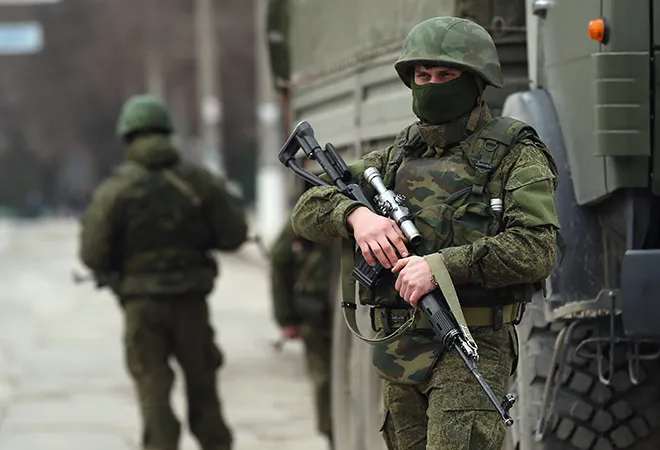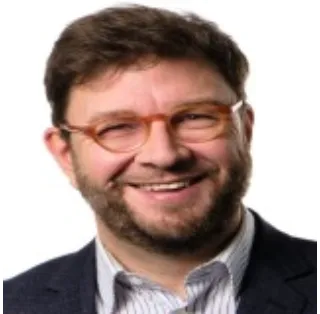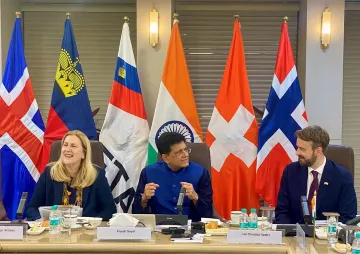
In its ninth month, Russia’s ‘special military operation’ in Ukraine acquired a deadly nuclear overhang, as allegations flew thick and fast of the imminent use of a ‘
dirty bomb’ in October. The Russian Defence Minister’s rare
calls to NATO counterparts, as also to India, were only the latest episode of intense nuclear signalling that Russia has engaged in through the conflict. The nuclear rhetoric further complicates an already difficult situation, where attacks on the
Nord Stream pipeline and the
Crimean Bridge signified a new phase of warfare threatening energy and civilian infrastructure. As the conflict hurtles alarmingly into redder zones, credible peace plans and exit ramps are conspicuous by their absence. With the war now entering a winter of uncertainty, India will need to carefully weigh its options as the incoming chair of the G20 and UNSC, and recalibrate its policy towards the conflict. Three peculiar features of this conflict make it a particularly vexing challenge.
The invasion of Ukraine was intended to deter NATO from encroaching into Russia's sphere of influence, and to potentially restore Ukraine to Russian influence and even territory.
Two Cold Wars
First, in a wider geopolitical sense, this crisis plays out against the backdrop of two Cold Wars that the US is engaged in. The hot war in Europe has triggered the revival of the original Cold War, a 21
st-century update of the historical contestation, featuring an aggressive US-led NATO, a resurgent Russia, a proxy battleground in Europe, and nuclear brinkmanship. Trump’s America had already declared Cold War 2.0 from 2018, as a renewed geo-political contestation against China. To be sure, Putin's actions, while invoking the wrongs of the 20
th century, are not driven by ideology as communism drove the USSR, but by power projection in its perceived periphery. The invasion of Ukraine was intended to deter NATO from encroaching into Russia's sphere of influence, and to potentially restore Ukraine to Russian influence and even territory. This now appears to be a case of strategic overreach by Russia. History teaches us that Great Powers can make great mistakes; however, Russia’s error is more consequential, even for itself. While Russia has miscalculated on multiple fronts, the West has also fallen short in its responses. The revival of the Cold War has not seen a comprehensive
strategic response like the ‘containment’ of the USSR, designed in the 1940s. As Kissinger
wrote in 2014, ‘the demonisation of Putin was not a policy but an alibi for an absence of policy on Russia’. Equally, it could be said today that the vilification of Putin and the lionisation of Zelenskyy may be symptoms of the absence of a coherent western grand strategy. Putin’s Russia of the 2020s is not the floundering post-Soviet entity of the last century; it has ambitions of being a resurgent and a relevant power, with a rising China as an ally.
An Unpredictable Trajectory
Second, this is a crisis with an unpredictable trajectory, thanks to improvised responses, shifting goalposts, and rapidly changing battlefield realities. With the
recognition of Donetsk and Luhansk in February, it appeared to observers that Russia had dusted up and improvised the playbooks of Georgia 2008 and Crimea 2014. However, a lot has changed in the past months with Russia being surprised by the Ukrainian response and resistance; the unending supply of western arms and intelligence to Kyiv; and the severity of economic sanctions, especially on its financial system and its energy exports to Europe. The current tactical objective for Russia would appear to be to retain the four annexed territories of Donbas and Crimea, even if the ‘notion of victory’ will be critical in any peace process. For Ukraine, it is tempting to militarily claw back territory before any talks, to try and revert to the pre-February status quo, if not of pre-2014, with a re-capture of Crimea. But a military solution remains an illusion.
The current tactical objective for Russia would appear to be to retain the four annexed territories of Donbas and Crimea, even if the ‘notion of victory’ will be critical in any peace process.
Where are the Peace Plans?
Third is the surprising absence of credible peace proposals. After the 2014-15 Crimea annexation, the quad of France, Germany, Russia and Ukraine had come under the Normandy Format to discuss the
peace initiative, leading to the shaky Minsk agreements. These fell apart, interpreted differently by Russia and Ukraine. In the current crisis,
Israel and Turkey have been trying to mediate since March 2022. The belligerents had made significant progress on a tentative peace plan in the early months, which included ‘neutral’, non-nuclear status for Ukraine in exchange for certain ‘security guarantees’ from Russia, Belarus, and others. The world’s ‘chief twit’, Elon Musk,
has injected some maverick peace plans into the discourse, while Istanbul along with the UN had
brokered a limited grain deal.
But where is the serious diplomacy that saved the world from nuclear Armageddon 60 years ago during the Cuban missile crisis? Thoughtful observers are rightly asking why we see little effort to find a solution to the crisis. Was the March peace plan stalled because of a western guarantee of unending support to Ukraine? Boris Johnson said in Kyiv in April – that the UK was in for the
‘long run’. And US Defence Secretary Austin, during his visit to Ukraine in April,
pointed out that the US and NATO were no longer just trying to help Ukraine defend itself, but were now committed to using the war to “weaken” Russia.
The world cannot afford to wait, praying for battlefield reverses or a solution by next spring after Europe has ‘shivered through’ this winter. Both Ukraine and Russia, at different points of the crisis, have given lip service to end the fighting through diplomacy, but this is yet to materialise. The UN Security Council is limited in its ability given that a permanent member is involved. Allowing the crisis to linger even in stalemate increases the probability of scenarios of nuclear escalation by miscalculation. The world must rush in with concrete plans for peace
. There is an urgent need for a serious peace process—or several alternative pathways, overt and covert—to lay the groundwork for a near-term solution.
Both Ukraine and Russia, at different points of the crisis, have given lip service to end the fighting through diplomacy, but this is yet to materialise.
India’s Choices: Can the Exit Ramp land in Goa?
Emphasising on its civilisational values of non-violence, and of the world as a harmonious family, India’s leadership has often spoken of New Delhi’s role as a peace-builder. It is important to read between the lines on India’s posture on the Ukraine crisis. Prime Minister Modi’s reiteration to President Putin that this is
‘not an era of war’, points towards New Delhi’s emphasis on diplomacy and dialogue. Moreover, India
stated to the UNGA in October that it stands ready to support all ‘efforts aimed at de-escalation’. As a trusted partner for both the West and Russia, India is well placed to play a critical role in this de-escalation process. Given its own historical experience, India would not prefer to impose any international mediation in the crisis. However, it could be persuaded by the warring sides to lead ‘facilitated bilateralism’ and offer a platform for peace talks.
As India takes the Chair of the G20 and defines a largely economic agenda, the conflict in Ukraine will remain the noisy elephant in the room. India could facilitate a peace process—through open or a back-channel communication—between the key stakeholders. PM Modi is, perhaps, one of a handful of world leaders today who can speak to Putin, Zelenskyy, Macron, and Biden in the same morning. And the Presidency of the G20 provides India both a critical stage and a responsibility to address the biggest crisis of the day. This peace process could be Tashkent 2.0, with echoes of
Tashkent in 1966, when both Russia and Ukraine, as part of USSR, facilitated a peace deal between India and Pakistan. This can be the time when India repays the favour. Both Russian and Ukrainian tourists love visiting India in planeloads in the winter. Can the off ramp of the European crisis lead to the sunny beaches of Goa or to the banks of the holy Ganges?
The views expressed above belong to the author(s). ORF research and analyses now available on Telegram! Click here to access our curated content — blogs, longforms and interviews.



 In its ninth month, Russia’s ‘special military operation’ in Ukraine acquired a deadly nuclear overhang, as allegations flew thick and fast of the imminent use of a ‘
In its ninth month, Russia’s ‘special military operation’ in Ukraine acquired a deadly nuclear overhang, as allegations flew thick and fast of the imminent use of a ‘ PREV
PREV



